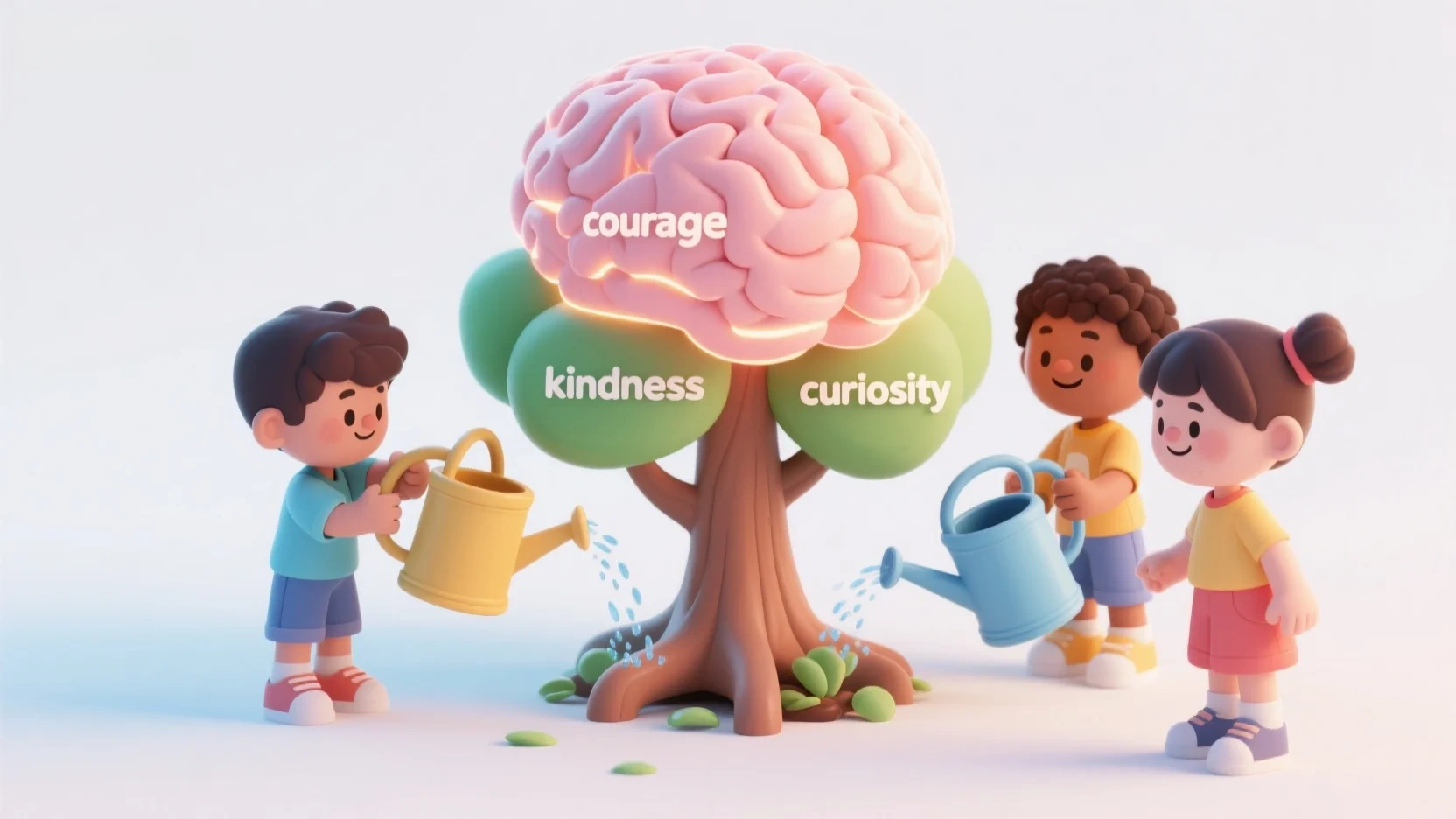Resilience is one of the most valuable gifts we can give children – the ability to navigate life’s challenges and bounce back from setbacks. Here’s how to explain this crucial concept in ways that will truly resonate with kids:
1. Start with Simple, Relatable Definitions
Think of resilience as your child’s emotional superpower. Here are engaging ways to explain it:
“Resilience is like being a bouncy ball – no matter how hard you get dropped, you always bounce back up!”
(Show this with an actual bouncy ball demonstration)
“It’s your inner superhero that helps you try again when things go wrong, just like your favorite characters in movies!”
“Imagine you’re a tree in a storm. The wind might bend your branches, but your strong roots keep you standing tall. That’s what resilience does for you!”
2. Use Powerful Visual Metaphors
Children understand concepts best when they can visualize them:
- •The ”Bounce Back Ball”: Compare a bouncy ball (resilience) to a lump of clay (giving up)
- •The ”Climbing Mountain”: Show that stumbling is part of reaching the top
- •The ”Puzzle Piece”: Explain how every challenge helps complete their life picture
3. Teach Through Hands-On Activities
Make resilience tangible with these interactive exercises:
The “Try Again” Board Game
Create a simple game where players encounter obstacles and practice:
- •Identifying feelings (“I feel frustrated!”)
- •Brainstorming solutions (“What could I try?”)
- •Celebrating effort (“Good job not giving up!”)
The “Bounce Back” Journal
Have children document:
- 1.A challenge they faced
- 2.How they felt
- 3.What they did about it
- 4.What they learned
The “Superhero Training” Course
Set up an obstacle course where each station represents a resilience skill:
- •The “Asking for Help” rope climb
- •The “Trying Different Ways” puzzle station
- •The “Calm Breathing” rest stop
4. Use Everyday Teachable Moments
Point out resilience in daily life:
- •When they struggle with shoelaces: “You’re being so resilient right now by not giving up!”
- •When a tower of blocks falls: “Uh-oh! What’s your bounce-back plan?”
- •When they lose a game: “Great job being a good sport! That shows resilience.”
5. Break Down the Process Step-by-Step
Teach children that resilience is a skill they can practice:
- 1.Notice the Challenge: “This feels hard right now”
- 2.Name the Feeling: “I’m feeling frustrated”
- 3.Normalize the Struggle: “It’s okay to find things difficult”
- 4.Brainstorm Options: “What could I try?”
- 5.Take Action: Pick one idea to test
- 6.Reflect: “What did I learn?”
6. Share Inspiring Stories
Children learn through narratives:
Real-Life Heroes
- •Thomas Edison’s 1,000 attempts before inventing the lightbulb
- •J.K. Rowling’s many rejections before Harry Potter was published
- •Your own childhood struggles and how you overcame them
Children’s Books That Teach Resilience
- •”The Most Magnificent Thing” by Ashley Spires
- •”After the Fall” by Dan Santat
- •”Giraffes Can’t Dance” by Giles Andreae
7. Create a Resilience-Rich Environment
Build daily habits that foster resilience:
- •Morning “Power-Up” phrases: “I can handle tough things today!”
- •Evening “High-Low” reflections: Share one challenge and how you coped
- •”Mistake of the Week” celebrations: Award the most interesting attempt
8. Use Empowering Language
| Replace: | With: | Because: |
|---|---|---|
| “Be careful!” | “What’s your plan?” | Builds problem-solving |
| “You’re so smart!” | “You worked so hard!” | Praises effort |
| “Don’t cry” | “I see you’re upset” | Validates feelings |
| “That’s easy!” | “That looks challenging!” | Normalizes struggle |
9. Make It Personal
Help children recognize their own resilience:
- •Create a “Growth Timeline” showing challenges they’ve overcome
- •Make a “Superpower Certificate” for when they show resilience
- •Record a “Bounce Back Playlist” of songs about overcoming
10. Remember: Resilience is a Journey
Key messages to reinforce:
- •”Everyone finds things difficult sometimes – even adults!”
- •”Asking for help is part of being resilient”
- •”The more you practice, the stronger your resilience grows”
By explaining resilience through these multi-sensory, engaging approaches, you’re not just telling children about this vital skill – you’re helping them experience and internalize it. The goal isn’t to prevent struggles, but to equip kids with the tools to navigate them confidently.








